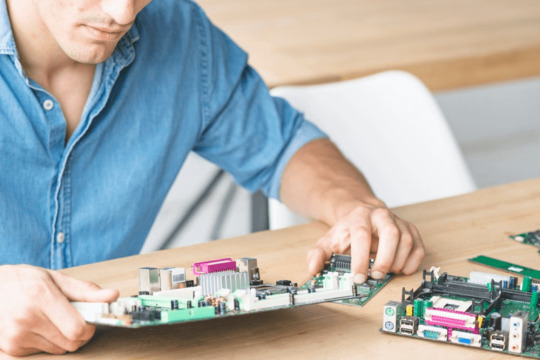Don't wanna be here? Send us removal request.
Text
Board Support Package (BSP) Development - Epsum Labs

In the world of embedded systems, getting hardware and software to work together seamlessly is no small feat. That’s where the Board Support Package (BSP) comes in—a critical component that ensures your operating system (OS) communicates effectively with your hardware.
But what exactly is BSP, and why does it matter for embedded development?
Let’s break it down step by step in simple terms.
What is a Board Support Package (BSP)?
Think of BSP as a bridge between hardware and software. It contains the essential drivers, configuration files, and bootloaders that allow an OS—like Linux—to run on a specific hardware platform.
Without it, your board is just an expensive piece of silicon!
Core Components of BSP:
✅ Bootloader – Wakes up the hardware and loads the OS into memory. ✅ Kernel & Device Tree (DTB) – Customizes the OS to recognize hardware features like GPIOs, buses, and memory. ✅ Device Drivers – Enables communication between the OS and peripherals (USB, Ethernet, Display, etc.). ✅ Root Filesystem (RootFS) – Houses system libraries, scripts, and utilities that run in user space. ✅ Board Configuration Files – Stores startup scripts and kernel configurations to define system behavior.
Step-by-Step BSP Development Process
Building a BSP isn’t just about writing code—it’s a structured process to ensure hardware and software integration. Here’s how it works:
🔹 Step 1: Hardware Bring-Up – Getting the board powered up and running. 🔹 Step 2: Bootloader Configuration & Debugging – Setting up the bootloader to initialize hardware correctly. 🔹 Step 3: Kernel & DTB Porting – Modifying the Linux Kernel and device tree to match the board’s hardware. 🔹 Step 4: Building the Root Filesystem (RootFS) – Creating the system environment using tools like Yocto or Buildroot. 🔹 Step 5: OS Bring-Up & Debugging – Testing and debugging system boot, drivers, and peripherals. 🔹 Step 6: Driver Development & Optimization – Customizing device drivers and improving boot times. 🔹 Step 7: BSP Finalization & Deployment – Packaging everything and deploying it onto the target board.
Each step ensures that your embedded system runs efficiently and reliably.
Read More on Board Support Package Development
0 notes
Text
The Evolution of IoT: From Concept to Everyday Reality

The Internet of Things (IoT) has come a long way since its inception. What started as a futuristic concept has now become an integral part of our daily lives, transforming industries, homes, and workplaces.
Let’s take a journey through the evolution of IoT, exploring how it started, the challenges it faced, and the significant advancements that have shaped its current state.
The Evolution: IoT 1.0 to 3.0
The idea of connecting devices to the internet dates back to the 1980s, but it wasn’t until the late 1990s and early 2000s that IoT began to take shape.
The first wave, often referred to as IoT 1.0, was about connecting basic devices to the internet.
Think of early smart appliances and rudimentary sensors. The focus was on enabling communication between devices, but the technology was limited by slow internet speeds, high costs, and lack of standardization.
By the time IoT 2.0 emerged, the focus shifted to scalability and interoperability.
This phase saw the rise of cloud computing, which allowed for better data storage and processing.
However, challenges like device compatibility, security vulnerabilities, and the complexity of wiring and automation persisted.
Connecting devices often required extensive manual effort, and the cost of implementation was a barrier for many businesses.
Read More on Evolution of Internet of Things
0 notes
Text
Industrial Revolution 4.0: How Automation is Reshaping Manufacturing for the Future

In our current society, the factor of automation is a crucial moving aspect of all industries, as it enables processes to be completed in a faster and more efficient manner. We are currently experiencing yet another phase of the industrial revolution, which is primed by technologies such as process automation, artificial intelligence (AI), the Internet of Things (IoT), robotics, and others.
Continued progress and application of these technologies change the operation of industries for the better, as it enhances their productivity and efficiency.
The Evolution of Factory Automation and Industry 4.0
Industrial automation has been the enabler of operational and productivity efficiency in manufacturing for years now.
The culture of industrial automation dates back to the era of primary mechanisation, where manual work was supplemented by hydraulic lifts.
In the modern world, this industry has matured into a range of cutting-edge connected devices powered by artificial intelligence, connectivity, and other enhancement tools.
The essence of industrial automation is to employ all available control resources of machines, sensors, actuators, processors, networks, and all robots with the aim to enhance production, increase efficiency, and encourage improvement in the manufacturing processes.
Read More on Industrial Revolution 4.0
0 notes